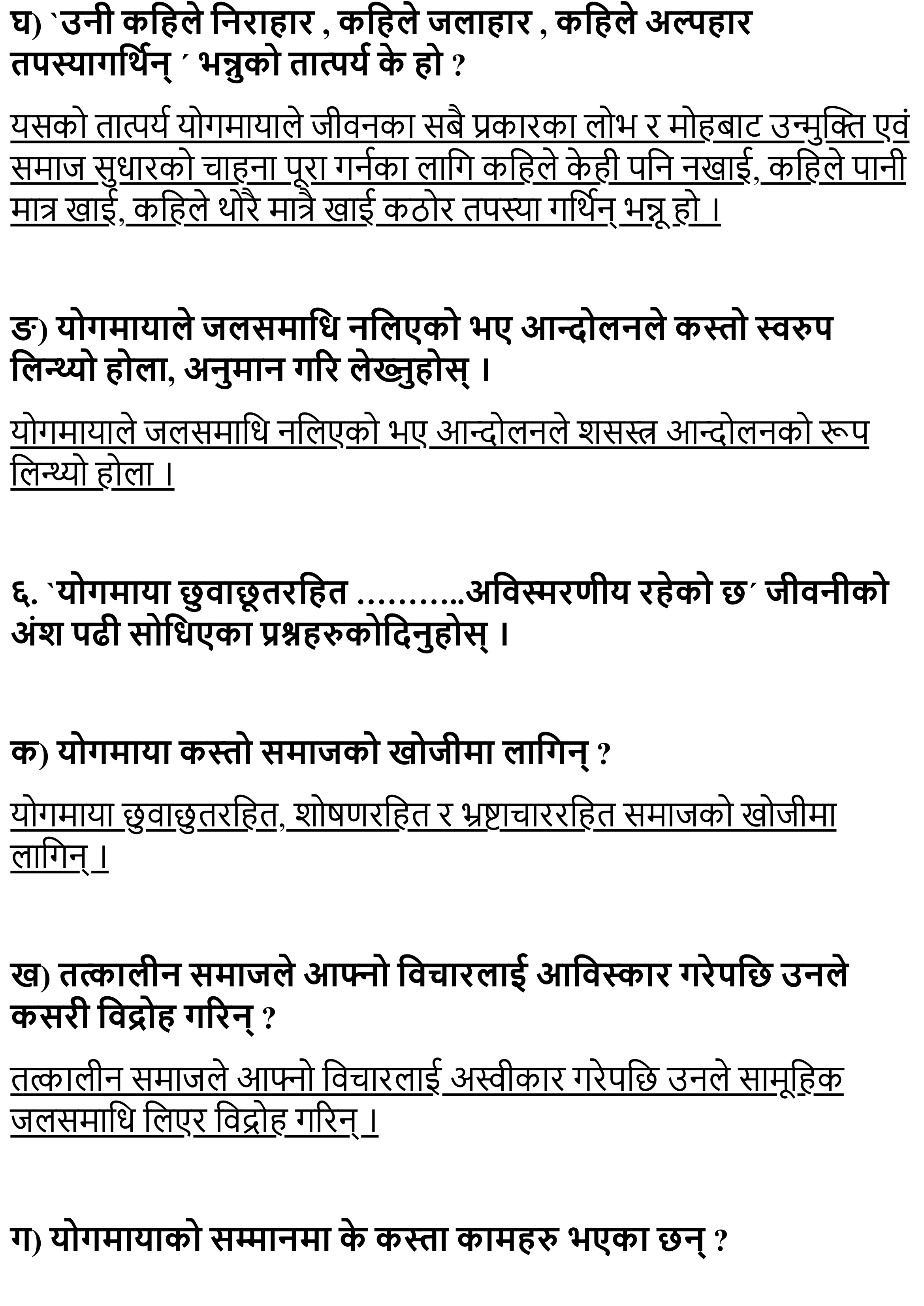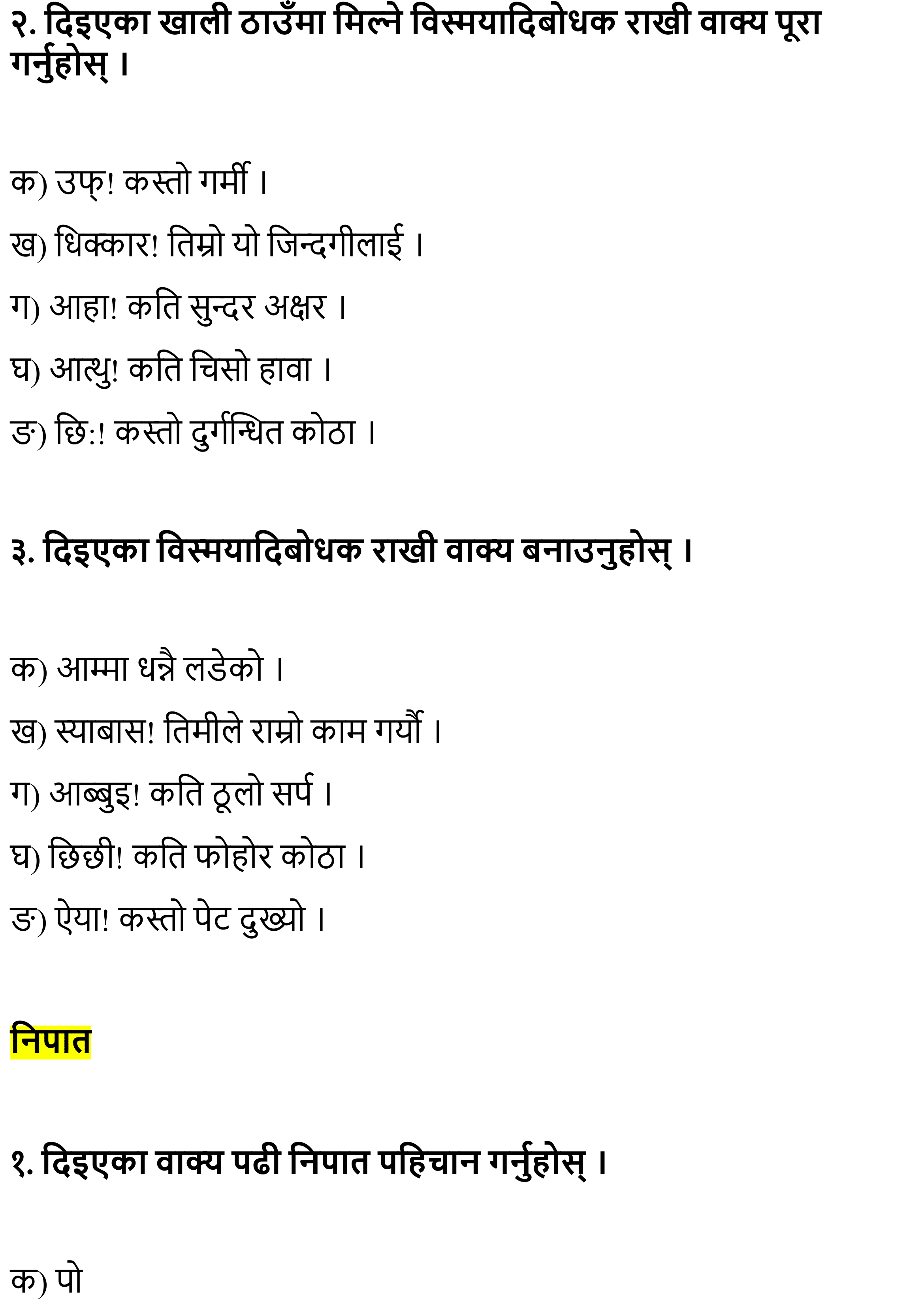
Yogmaya - Chapter 4 Class 11 Nepali
Yogmaya Neupane was a Nepalese poet, activist, and rebel who fought for women’s rights, social justice, and religious reform in the early 20th century. She is regarded as one of the first female revolutionaries and poets in Nepal.
Check:
Class 11 Model Question (All Subject)
Class 11 Nepali Model Question 2080 (With Solution)
Complete Exercise of Class 11 Nepali Unit 4 about Yogmaya.
Yogmaya Exercise





























Class 11 Nepali: Yogmaya Biography - Summary
- Chapter 3: Sanskriti ko Naya Yatra
- Chapter 5: Sathi lai Chithi
What topics are Covered in this Post?
- Class 11 Nepali Book
- Yogmaya Neupane
- Unit 4 Exercise
- Class 11 Chapter 4 Exercise
- Yogmaya Class 11 Notes
- Yogmaya Class 11 Summary in Nepali
- Nepali Literature
- Nepali Women Writers
Frequently Asked Questions About Yogmaya.
Who was Yogmaya Neupane?
Yogmaya Neupane was a religious leader, women’s rights activist and poet based in Bhojpur district of Nepal.
When was Yogmaya born?
She was born in 1867.
What did Yogmaya Neupane do for women’s rights in Nepal?
Yogmaya Neupane fought against social evils like child marriage, polygamy, dowry, widowhood and caste discrimination. She also advocated for women’s education, empowerment and freedom. She founded the first organization of Nepali women, the Nari Samiti for Women’s Rights, in 1918.
What was the Nari Samiti for Women’s Rights?
The Nari Samiti for Women’s Rights was a group of women who followed Yogmaya Neupane’s teachings and vision. They organized protests, rallies and campaigns to raise awareness and demand justice for women’s issues. They also helped poor and oppressed women by providing them with food, shelter and education.
What was the Sarwartha Yogbani?
The Sarwartha Yogbani was Yogmaya Neupane’s only published book of poems. It contained her spiritual insights, social critiques and moral messages. It is considered to be one of the earliest works of Nepali literature by a female poet.
When and How did Yogmaya Neupane die?
Yogmaya Neupane died by leading a mass suicide of 67 followers into the Arun river in 1941. She did this as a protest against the oppressive Rana regime that ruled Nepal at that time. She believed that her sacrifice would bring about a new era of peace and justice for her country.